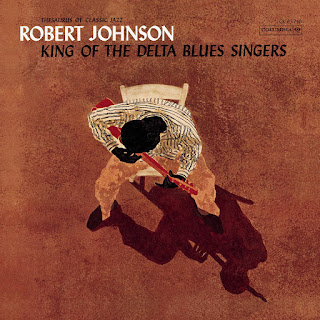374. Robert Johnson, "King of the Delta Blues Singers"

For lack of a better word, this album is just spooky. Recorded in 1936 and 1937 when Johnson was just 25 and 26 years old, it's really just a scratchy recording of the man and his guitar, but it would go on to become the foundation for a lot of what we think of as "rock" today. Even if you don't know anything about early blues or know what a I-IV-V sequence is, if you listen to this you'll immediately go "Oh! That's the blues sound!" It's that recognizable. The recordings languished in obscurity for many years until John Hammon persuaded Columbia Records to issue them as a set in this album in 1961. There is probably no way to overstate the impact this collection had on popular music. Everyone from Bob Dylan to Keith Richards to Eric Clapton was immediately galvanized by what they heard on this record. Of course they were. Johnson's voice, which varies from a plaintive whine to an anguished growl, sounds like it's issuing straigh...





